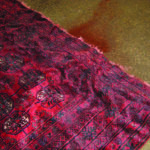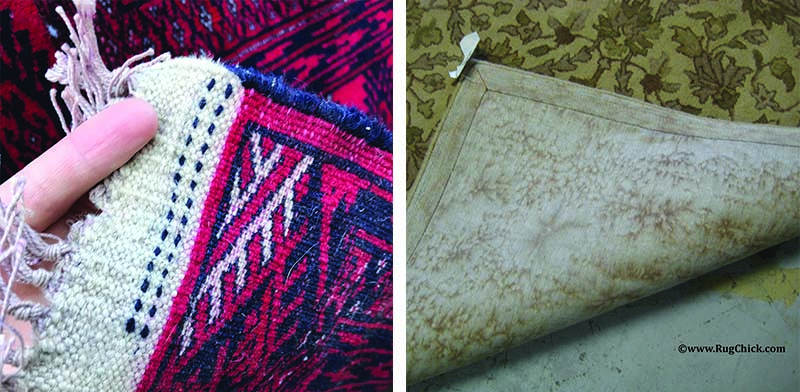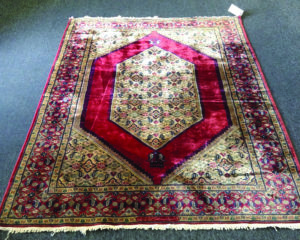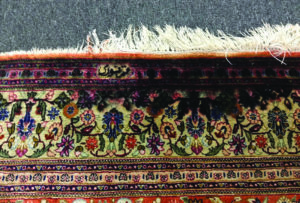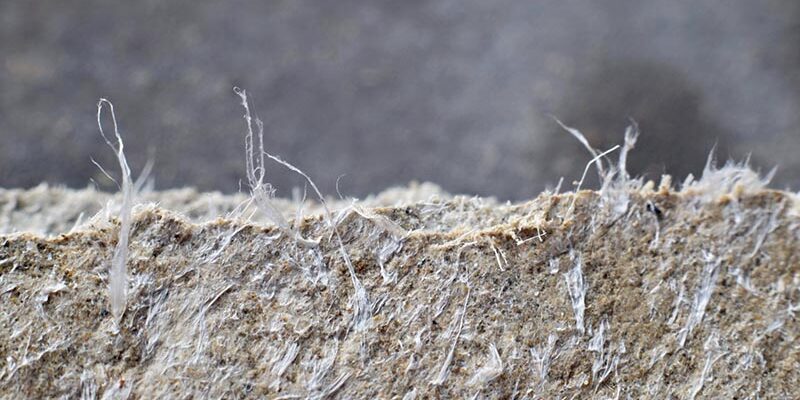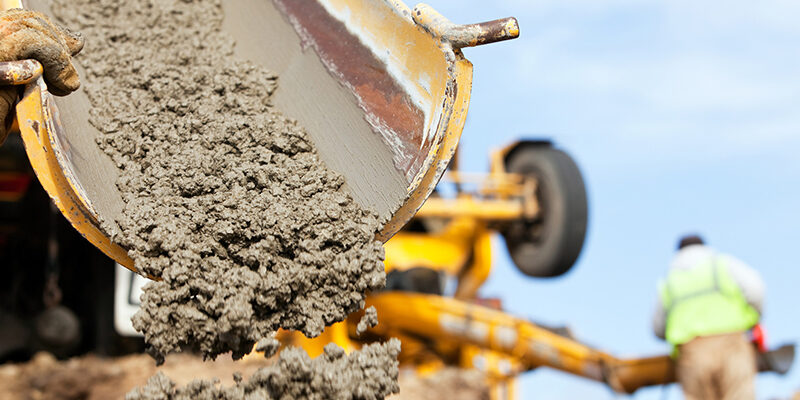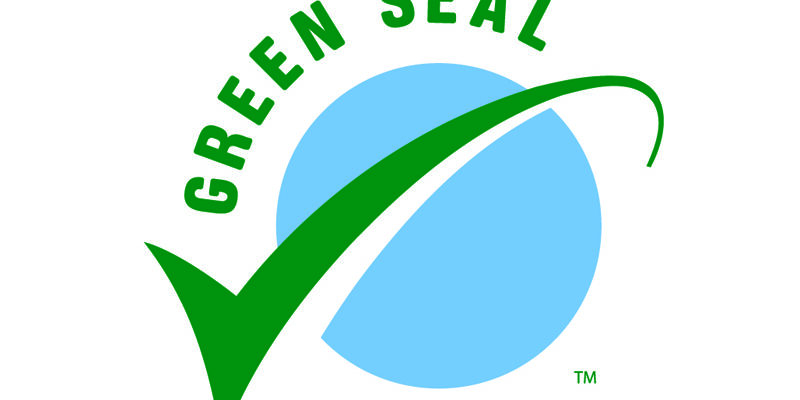Rugs and Floods: Textile Triage During a Water Loss

By Lisa Wagner
When a home floods and professionals are called out to attempt to save the structure and its contents, it is rare that one of the team’s areas of expertise will be oriental and area rugs.
The wet rug in the family room may be worth a hundred dollars — or a hundred thousand dollars. The rug might be an easy-to-replace contemporary piece or a rare and antique piece of textile art. In the middle of the chaos, usually in the middle of the night, the rugs may be the last concern of those tackling the job of saving this home. However, when a rug is a memory from a past trip or an heirloom handed down through family generations, saving this rug may be the one bright spot in the middle of a very dark and damp disaster.
Here are some questions and simple guidelines to help the process of textile triage so that water-damaged rugs of value — monetary and sentimental — have a better chance of being saved.
Natural or synthetic?
In most cases, natural fiber rugs will have a higher value than synthetic fibers. Natural fibers will absorb water more readily than synthetic fibers, and these will be the fibers most prone to dye migration and mold. The longer these rugs stay wet, the more damage and contamination will result.
If the goal during triage is to focus first on the higher-value items to extract and dry, then focus first on the rugs that are wool, silk, and cotton. Leave the nylon, olefin/polypropylene, and polyester rugs for the second phase of extraction and dry out. (Many rugs will have a label on the back corner which shows fiber content if you are not skilled in fiber identification.)
Woven or tufted?
If the homeowner is not present to identify which rugs have a higher value than others, then your triage should sort the rugs based on whether they are woven or tufted.
Woven rugs may be woven by hand or woven by machine. With these rugs, you can clearly see the design and colors of the rug on the back side. If you can flip the back corner over and see the design clearly, focus on saving that rug.
Tufted rugs have a backing material. When you flip the back corner over, you will see a cloth covering on the rug, or you will see a glue or rubber backing.
If there are labels that indicate a tufted rug is from Pottery Barn, Crate & Barrel, West Elm, or another similar or online stores, this rug is a commodity rug and often costs less to replace than to attempt to save.
Tufted rugs left wet too long tend to fall apart, and the adhesive and backing materials are extremely susceptible to mold growth, so these rugs often are considered a total loss when exposed to a flood. If you have limited time to focus on extracting and drying out rugs, focus on the rugs in which you can clearly see the design on the back instead of the rugs with material-covered backs.
As quickly as possible
If extracted and dried quickly, damage to natural fiber rugs will be halted until the rugs can be evaluated to determine whether a full wash and disinfectant soak can return them to pre-loss condition. The quicker the water-damaged rugs are dried out, the greater the chance to save them.
Do not hang wet rugs to drip dry. This can cause more dye migration throughout the rug and, depending on the weight of the rug, it also can cause structural damage that may be irreversible.
It is best to extract and dry rugs flat after a water loss. Extraction needs to be performed with the direction of the pile of the rug so pile damage does not occur. If extracting silk or artificial silk fibers, extracting through a nylon screen can help lessen wand damage to delicate fibers.
Extraction of the back of a woven rug also will remove moisture from the foundation fibers, which will speed up the drying process. Warm, dry air across both sides of the rug will speed up the evaporation and drying process as well.
If the rugs cannot be taken to a drying chamber for a proper quick dry out, and they are being laid outside in the sun, place the rugs face down on a clean surface so that any fading will not affect the front side of the rug.
Transport protection
When transporting wet or damp natural fiber rugs, never stack them on top of one another without a barrier between. Also, never roll up wet rugs without a barrier to prevent dye bleed from the front to the back sides. Rugs can be rolled with plastic sheets as a barrier or, ideally, rolled in cotton sheets or towels after extraction to help absorb dyes that are released and prevent them from spreading into other areas of that rug.
In an ideal world, water-damaged rugs would be immediately washed and decontaminated and then thoroughly dried. If your restoration facility does not have a complete rug-washing system in place, then drying out the rugs as quickly as possible allows you to take these rugs to a rug wash facility with minimal damage and a much higher likelihood of saving them.
Decontamination wash
One of the primary concerns with rugs getting wet from floods is the risk of mold in the interior fibers. Many natural fiber rugs have cotton interior warps and wefts, which are prone to mold growth from a flood. All synthetic fiber rugs have interior jute and cotton fibers, which also are extremely prone to mold growth from flooding. Therefore, speedy dry out is the first step to halt decontamination risks and permanent damage.
After the wash process is performed, the proper disinfectant must be used, and the guidelines for effective decontamination based on the source of water and the category of the flood must be followed. All rugs exposed to flood water must be thoroughly washed and treated with the appropriate disinfectant or sanitizing solution to return them to pre-loss condition. For more insight into the guidelines of Category 3-affected wool rugs, see Dr. Daniel Bernazzani’s study, “The Effect of Disinfectants, Cleaning, and Drying Practices on Oriental Rugs Flooded with Contaminated River Water.”
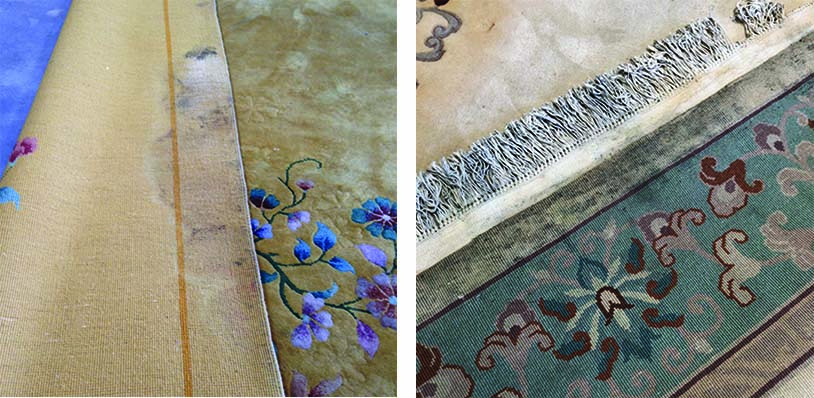
Mold and dry rot damage on a Chinese rug affected by a flood (left). If mold roots are spread throughout the foundation of a woven rug, it may be impossible to make the rug safe enough to return to the home (right).
Sometimes the guidelines required may create additional risks to water-damaged rugs. For example, a 20-minute dwell time, or perhaps multiple cycles of disinfecting soaks, on a rug with dyes that are not colorfast may present a dye-bleed risk. Sometimes pre-existing conditions may magnify the risks of this salvage attempt. For example, a rug with heavy pet urine contamination that has already created a mold and dry rot problem within the foundation of the rug may create a contamination scenario in which the rug needs to be handled as Category 2 or 3 even though the flood may have been a clean-water pipe break.
Unless you are a certified appraiser of rugs, it is not your role to determine which water-damaged rugs are worth saving and which ones are not. Your role as the professional restorer is to identify which rugs can be saved and take the steps necessary to minimize the damage during the pack out process to allow for the rugs to be properly decontaminated by a professional rug washer.
Using a restoration triage process of focusing dry out efforts firstly on woven and natural fiber rugs will increase the chances of saving the most valuable rugs in a flooded home even if you do not know anything about investment rugs.
Lisa Wagner is a second-generation rug care expert, NIRC Certified Rug Specialist, and owner of K. Blatchford’s San Diego Rug Cleaning Company. For online rug course and training event details, visit www.rugclass.com.

